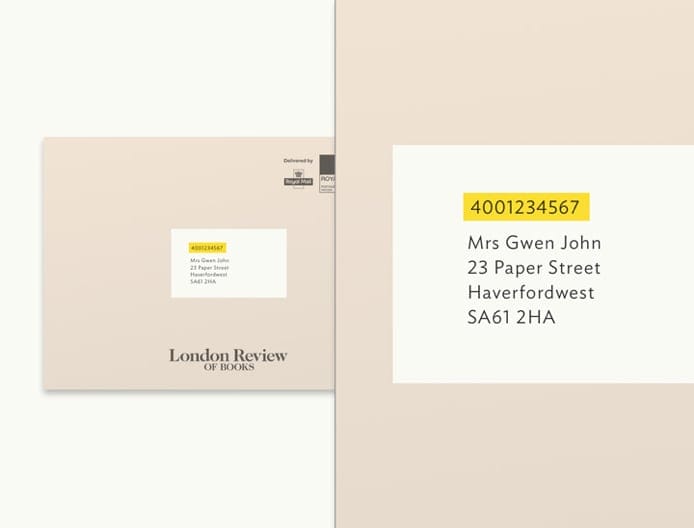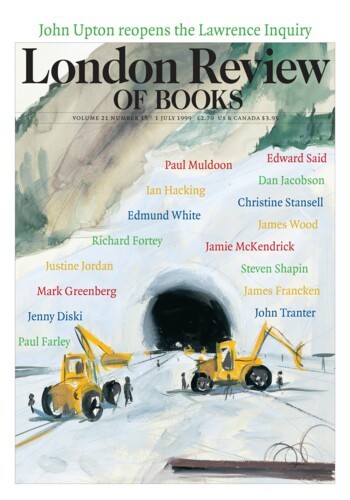Of the several sports that have turned almost completely professional during the past three decades, tennis deserves a place of honour in what Christopher Lasch called the culture of narcissism. A sport of skilful, well-mannered ladies and gentlemen has metamorphosed into a brutal confrontation between unpleasant, physically overdeveloped and remorselessly single-minded hitters, which is controlled by agents, TV networks, tournament bosses, sports equipment conglomerates, automobile and, until recently, cigarette companies. At the same time, an ever-increasing number of former non-tennis countries, besides having the de rigueur national airline and lavish arms procurement agencies, today put on at least one international tournament a year. There are now Qatar and Dubai Opens, to say nothing of counterparts in Tashkent and Conakry. So along with the Grand Slam Big Four (Wimbledon, Sydney, Paris, New York) and the national tournaments, a complex web of satellite tournaments keeps the sizable corps of men and women pros, plus – in the case of top players – retinues that include trainer, coach, psychologist, lover and bodyguard, in business for 52 money-earning weeks a year.
No wonder, then, that as a spectator sport tennis has become such a big and well-managed business that a broad gulf now exists between the thinning ranks of weekend amateurs and the growing number of playing pros. You used to feel that the difference between yourself and a superb player like Budge Patty was a matter of degree. He was more consistent, hit harder, looked better, and was a keener competitor, but you and he inhabited the same universe. True, he owned several more rackets and practised more regularly than you, but he and others like him, drank, ate, smoked, even held a job much as you did. He was certainly a better, more stylish player than you, but there was a discernible continuum between what he and you did: if you worked harder, lost (or maybe gained) a pound or two, concentrated more on your forehand swing, you could (but of course never did) play with him and not totally disgrace yourself. Now try to imagine yourself today as you were in your twenties, facing Sampras or Philippoussis or Ivanisevic, or even Navratilova, Hingis or Venus Williams: can’t be done, no way at all even of being on the same court, much less hitting their balls back. Two decades ago, wooden rackets were replaced by high-tech instruments engineered to the utmost in hitting efficiency, and daily restrung, for ever more demanding players whose main concern is blinding power and speed, in pursuit of which they are liable to use a different racket for each game. The fierce training and dietary schedules have become so demanding, the strokes and serves so laden with topspin, whirring bounces and inconceivable angles as to make any kind of match between past and present unthinkable.
I’ve been involved with tennis for well over fifty years now, and am feeling glummer and more dissatisfied with the sport than ever. I experienced some of the changes through my son Wadie, who became infatuated with the game when he was four or five. He was just getting started as a competitive player in his early teens when he smashed his right elbow doing a bicycle stunt; although it was rebuilt, it never stopped bothering him. Eight years later, his doctor found that the two pins he had inserted were encrusted with tissue; he fatalistically left them in place, and they became a permanent tennis handicap. Still, Wadie managed to become an excellent competitive player, taking part in European junior tournaments, playing for his university team, working as a coach-instructor at resorts and tennis camps. At six foot three, with unusually long arms and legs and a wiry muscular body, he was transmuted into an intimidating modern player at the age of 14: I was never able to get more than a game or two per set from him after that because the difference between us – I have played decently all my life, the kind of game which with some irony he calls ‘classic’ – was so stark.
The modern game pioneered by Björn Borg is based on power and topspin, two-handed strokes, long rallies with few errors and single-minded efficiency of the kind that banished any of the niceties that made up ‘sportsmanship’. Until I became too ill to play regularly, the games between Wadie and me ended up as cold-blooded massacres with the odd Oedipal outburst from me punctuating his total dominance of his lumbering old dad. Once when I said something about the need occasionally to compliment one’s opponent on a good shot, Wadie, normally a gentle and considerate fellow, dismissed the suggestion as something no coach of his ever taught. The idea was to win as decisively, perhaps as punitively as possible, with the triumphant clenched fist nailing your adversary’s humiliation. The speed and high-bouncing spin of his balls had me against the fence, always playing over my head (in both senses). Unless you did the same thing to your opponent you were trapped, and I never could.
Having played and watched the game for such a long time, I still like to believe that players like Pancho Gonzales, Rod Laver, Lew Hoad, Jaroslav Drobny, Frank Sedgman, Don Budge and Jack Kramer were as good if not better than the present lot – Sampras, Agassi, Moya, Kafelnikov, Rios and so on. The only first-class pre-World War Two player I ever saw was Henri Cochet, who had occasionally beaten the great Tilden in the Twenties. A skinny, muscular Frenchman in very short shorts, Cochet played in the first Cairo tournament I attended – I think in 1946 – but he was too old to get beyond the second round. Yet I was amazed at his agility and preternatural skill as a strategist and retriever. Professional players of my son’s generation (he’s now 27) won’t have any of this, partly because they never saw even the great postwar champions like Ted Schroeder, Frank Parker, Eric Sturgess, and there are no videos of what Wadie quaintly refers to as ‘vintage’ players, partly because today’s champions are focused so exclusively on tennis, with endless exercise and hitting drills and virtually nothing else to do except take care of themselves – the sport’s history is the least of their concerns. They have become technical specialists earning millions, players whose extraordinary if rather unattractive power shuts out time, memory, life. Whereas the great amateurs of the past (with occasional exceptions like Gonzales) tended to be educated, Sampras, for example, never finished high school. They were also interested in other things, like working for oil or tobacco companies, as public relations executives, given that tennis didn’t really earn one a living despite the modest under-the-table payments slipped to star players as appearance fees – another reason it’s impossible to identify with any of the game’s male players today. Paradoxically, the women’s game, with its more human pace and its inventiveness, is far more gripping to watch. Tennis today has nothing more extraordinary to show than this year’s Roland Garros final between Martina Hingis and Steffi Graf.
Wimbledon, of course, is still Wimbledon but one feels that the fabled ‘atmosphere’ of the place has been vitiated by the commercial interests that sustain it: in addition to a huge trade in idiotic and unnecessary tennis knick-knacks like T-shirts and caps, there’s the sullen crowd of young pros dressed as walking billboards for Hertz, Movado or Volvo rather than as tea-sipping athletes in white flannels. Even the commentators are pros (some of them, like Cliff Drysdale and John McEnroe, excellent ones). In nearly every way tennis has become an alienated, albeit highly lucrative profession rather than a sport. The game’s most flamboyant and most gifted practitioner, Andre Agassi, has earned fabulous sums as an endorser of various products, flies his own jet, and married (then divorced) movie star Brooke Shields. I still think either Sedgman, Laver or Drobny (to say nothing of Agassi’s erstwhile brother-in-law Gonzales) could have taken the King of Las Vegas handily, his amazing speed, anticipation and racket control notwithstanding.
The core of championship tennis has always been the attacking, i.e. serve and volley game. Ground strokes were important for opening up the court, making an approach to the net possible or, on slower surfaces like clay, getting the opponent off position entirely. What used to be called ‘style’ or ‘form’ was essential, perhaps reflecting the luxurious clubs and upper-class atmosphere from which many players seemed to emerge. A premium was placed on smooth, flowing strokes, a graceful, loping run, with no jerkiness or grunting of the sort that dominates the game today. Champions were always anomalies, however, either social misfits like Gonzales, products of distant, former colonies like Australia, America and South Africa, or supremely gifted artists (not necessarily great athletes) with a knack for handling a ball and mastering the court’s geometry. Ilie Nastase, Rafe Osuna and McEnroe were the last of that group to play successfully for some years: the breed of ‘touch’ players is now extinct. Also extinct is the colourful middle-level player, a mainstay of the circuit who could always be counted on for an upset or a stunning doubles match. Today the middle-level players are anonymous, earnest technicians who play the satellites and occasionally rise to prominence with scarcely a ripple or memory left after their time is over.
Some account of the organic nature of tennis is missing from Caryl Phillips’s rather too random compilation, The Right Set: The Faber Book of Tennis, which I had looked forward to reading as an anthology that starts with Suzanne Lenglen and ends more or less with Venus Williams. The game’s tissue, if you will, is almost totally missing, which makes me suspect that Phillips threw it together a bit hastily and without any close involvement with tennis. That’s only an impression gathered from the fact that very little of the actual life of the game appears in the book’s pages and from my disappointment that such a gifted writer gives so little of himself in a quasi-inert hotchpotch of selections from here and there. Except for an interesting though badly written piece by Jaroslav Drobny, the Czech player who deserted his country for King Farouk’s Egypt and who was a regular at the Gezira Sporting Club when I was learning the game in the late Forties, the anthology concentrates on the too distant past and the too contemporary present. A somewhat grim, beefy former hockey-player with tinted glasses, and one of the great artists of the game, Drobny was a formidable lefty with incredible angles and murderous drop shots which, at the age of 34, finally earned him the 1954 Wimbledon title (defeating Rosewall in the final) and several French titles along the way. Suzanne Lenglen and Helen Wills Moody deserve the attention Phillips gives them, but not at the expense of the French Musketeers, and great prewar players like Ellsworth Vines, who isn’t even mentioned. But then neither are the dominant postwar figures like Kovacs, Trabert, Seixas, Savitt, Kovalevski, Talbert, Falkenberg and Ralston.
The Right Set rarely takes you inside the game as it is played and lived rather than as it is looked at on television. I kept missing finely rendered scenes of tennis life from the Fifties to the Seventies such as those provided in the South African player Gordon Forbes’s memoir A Handful of Summers, with its details of that less commercial and high-pressured time when top tennis players didn’t stay at the Ritz but at a club member’s house and when even Rod Laver shared a room. How can one give an adequate account of modern tennis without saying something about the Danes, Kurt Nielsen (a Wimbledon finalist) or Torben Ulrich? Nothing about the unheralded 1966 Wimbledon champion, Mañuel Santana, the Swedes, Sven Davidson and his predecessor (later Borg’s coach) the diabetic Lennart Bergelin? No references to the great Nicola Pietrangeli, the minuscule Beppe Merlo, the dashing Adriano Panatta, all of them longtime stars of Italian and world tennis. Latin Americans like Brazil’s Armando Viera, who perfected a unique over-the-shoulder lob return, Luis Ayala, the superb Chilean champion, or Alex Olmedo, an American Latino champion of rare grace: no reference to their achievements or presence at all. It was the variety of their game and their strongly contrasting personalities that gave tennis so much of its colour and fascination.
Most peculiar in Phillips’s collection is the failure to note the significant milestones in the history of the postwar game: but perhaps this is inevitable in an anthology without headnotes or linking passages between the excerpts (some of them useful if not always inspired choices – for example, John McPhee writing about the Arthur Ashe-Clark Graebner 1969 Forest Hills match as a microcosm of American social differences) or any resourceful organising principle. Certainly some note should have been taken of Jack Kramer’s invention of the Big Game and indeed of the pro tour itself. As player, entrepreneur, organiser and pundit, Kramer was a major, almost prophetic figure in the sport. Equally significant in his time was the Australian Harry Hopman, who introduced the rigorously unforgiving training schedule that produced not only Hoad and Rosewall, 18-year-old prodigies in the Fifties, but also Neale Fraser, Mal Anderson, Laver, Roy Emerson, John Newcombe and Fred Stolle (plus lesser stars like Don Candy and Bob Howe). I wanted to know more about South African tennis during apartheid, which gave rise to Sturgess, Gordon and Jean (his sister) Forbes, plus the colourful Abe Segal, and fine Davis-Cuppers like Bob Hewitt, Ian Vermaak, Trevor Fancutt, Owen Williams – as well as the best of them, Cliff Drysdale. The connection between tennis and politics is hinted at in the extracts about and by Arthur Ashe, but there is also something to be said about the German game, whose earliest prominent figure, the glamorous and elusive Baron Gottfried von Cramm, married Barbara Hutton and had an ambiguous relationship with the Nazis; his tenacity and panache had a lasting influence on the game, apparent not only in Boris Becker and Michael Stich (who resembles von Cramm in the sheer fluency of his strokes) but also in the remarkable Wilhelm Bungert, a Wimbledon finalist twenty years before Becker. What is the secret of Czech tennis, what with Drobny and his doubles partner Czernik, leading to Jan Kodes (Wimbledon, 1973), Ivan Lendl (the greatest mechanic of the professional era, a hero to my son’s generation, a fore-runner of tennis’s decline to mine), Navratilova, Mecir, Kucera, and several other gifted champions? By contrast, why has British tennis, leaving aside Henman and Rusedski, fared so wanly since Fred Perry, in spite of strong players like Mark Cox and Roger Taylor?
Polish players – Vladimir Skonecky, Wojtek Fibak – deserve a bit of notice, as does the amazing efflorescence of the Spanish clay-court players, male as well as female, to say nothing of the great Swedish dynasty from Borg and Wilander through to Enqvist and Magnus Larssen, or the consistently interesting French competitors who would have to include Noah, Leconte, Pioline, or the Dutch school, starting with Tom Ocker, one of the quickest players ever, who was followed by Richard Krajicek, the 1997 Wimbledon winner. And then we need a survey of the many Americans who emerged from Florida and California, beginning with Gardnar Mulloy through to Chris Evert, who is handsomely profiled in the book’s last and best section, ‘The Modern Personalities’, along with Billie Jean King, Boris Becker, Andre Agassi, and Jimmy Connors. The modern women’s game at its best was initiated by the unforgivably excluded Maureen Connolly, perhaps the finest woman player ever, who herself built on the achievements of Louise Brough, Doris Hart, Alice Marble and Pauline Betz, among many others. Maria Bueno, too, is passed over very lightly, though she dominated the game in the Sixties, just before Billie Jean King, Margaret Court and Evonne Goolagong.
Having said all this, I should add that, except for some innocuous bits about ‘tradition and the game’ at the end (Phillips would have done better to consult and quote from Timothy Gallwey’s excellent The Inner Game of Tennis, or any number of how-to manuals written by coaches and/or former players), this is an enjoyable book to read. Phillips allows certain aspects of the game to shine through into the contemporary era: the tyranny of rapacious coaches like Nick Bollettieri, the psychology of the great player, and all the things that don’t change – the punishing travel, locker-room experience, physical discipline, and most of all, the sheer, ephemeral beauty, the never-to-be-repeated duels, the spectacular shot, the thrill of playing a match on set point. I’m surprised Phillips gives no space at all to the doubles game, surely a rare treat for players and spectators alike. A player some years back, when asked about the greatest doubles team in history, said: ‘John McEnroe plus anyone.’ Why and how? I wanted to ask Phillips. Or, my last cavil, how can any description of tennis as something experienced and played by anyone, at any level of skill, fail to speak explicitly about ‘gamesmanship’ or even ‘lifemanship’, which were first so memorably identified and depicted by that perennially underestimated genius, Stephen Potter, whose unscrupulous, immensely sly and maddeningly crafty character Gattling-Fenn has to be the model for players who beat us on the court and in real life without ‘actually cheating’. Watch to see if the disconcerting tactics perfected by Gattling-Fenn make an appearance as the Wimbledon matches unfold before you: but also remember that you’re looking at a sport in sad decline.
Send Letters To:
The Editor
London Review of Books,
28 Little Russell Street
London, WC1A 2HN
letters@lrb.co.uk
Please include name, address, and a telephone number.



